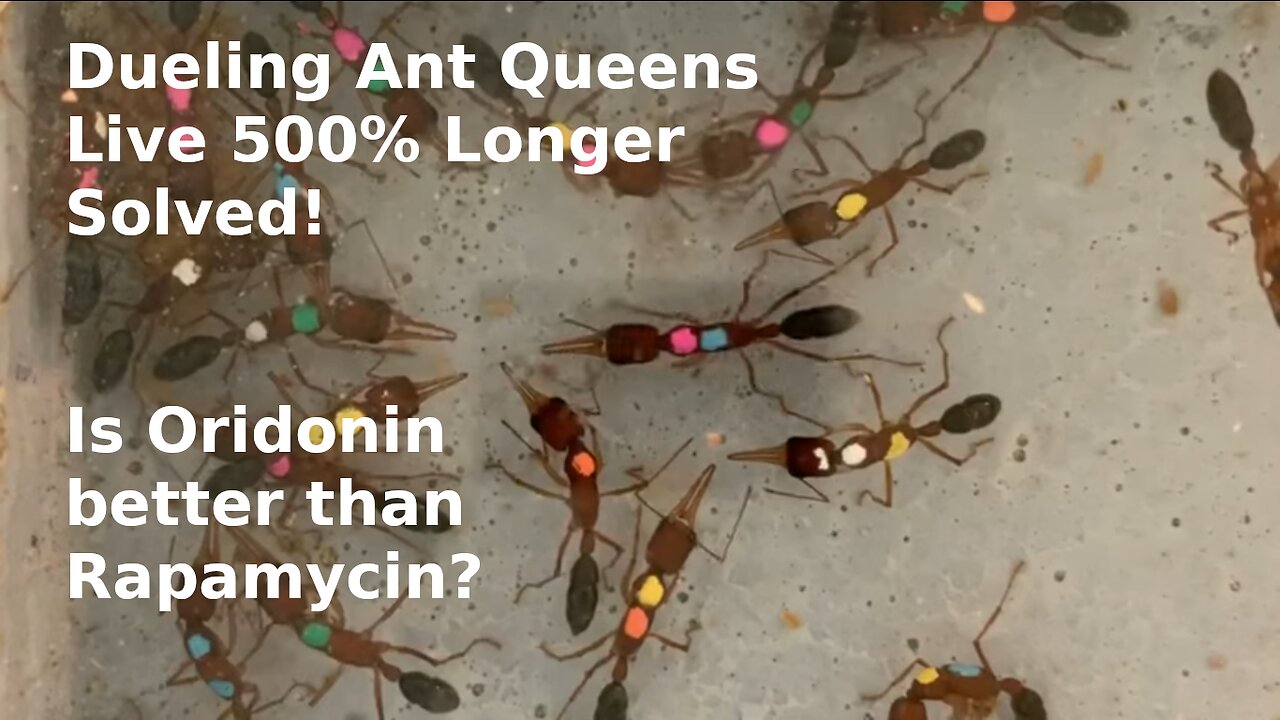Premium Only Content

How Queen Ants Live 500% more, Solved! and Is Oridonin better than Rapamycin?
Insulin signaling in the long-lived reproductive caste of ants
Long live the queen
A trade-off between reproduction and lifespan occurs across most living organisms. An exception is insects such as ants, in which reproductive activity is limited to one or a few “queens” that live much longer than nonreproductive “ workers. ” Studying a pseudo-queen state of the ant Harpegnathos saltator, Yan et al. found that the insulin and insulin-like growth factor signaling pathway was activated to promote reproduction, which also shortened life span. The authors propose that one branch of this pathway, mediated by the protein kinase Akt, is suppressed in the fat body and some ovarian tissues. Increased production of a protein that binds insulin-like molecules in the hemolymph might account for the difference that allowed the longer life span of the pseudo-queen. —LBR
Abstract
In most organisms, reproduction is correlated with shorter life span. However, the reproductive queen in eusocial insects exhibits a much longer life span than that of workers. In Harpegnathos ants, when the queen dies, workers can undergo an adult caste switch to reproductive pseudo-queens (gamergates), exhibiting a five-times prolonged life span. To explore the relation between reproduction and longevity, we compared gene expression during caste switching. Insulin expression is increased in the gamergate brain that correlates with increased lipid synthesis and production of vitellogenin in the fat body, both transported to the egg. This results from activation of the mitogen-activated protein kinase (MAPK) branch of the insulin signaling pathway. By contrast, the production in the gamergate developing ovary of anti-insulin Imp-L2 leads to decreased signaling of the AKT/forkhead box O (FOXO) branch in the fat body, which is consistent with their extended longevity.
-
![Wall Street CRASHED Bitcoin DOWN To $80,000!! [Heres Proof] | EP 1389](https://1a-1791.com/video/fww1/dc/s8/1/G/E/S/E/GESEz.0kob-small-Wall-Street-CRASHED-Bitcoin.jpg) LIVE
LIVE
Simply Bitcoin
2 hours ago $0.28 earnedWall Street CRASHED Bitcoin DOWN To $80,000!! [Heres Proof] | EP 1389
161 watching -

Timcast
2 hours agoMedia MELTS DOWN Over New Media Pentagon Takeover
92.5K32 -
 2:04:40
2:04:40
Steven Crowder
4 hours agoWar Criminal Pete Hegseth: Debunking the Media's Newest BS Smear Campaign
352K236 -
 59:57
59:57
The Rubin Report
3 hours agoPress Gasps When Told Trump’s Brutal Plan for Venezuela
29.9K74 -
 LIVE
LIVE
Benny Johnson
4 hours ago🚨Trump Cabinet Meeting LIVE Now in White House As Somali Fraud EXPOSED, Third World Deportations
5,117 watching -
 LIVE
LIVE
Sean Unpaved
2 hours agoAbdul Carter BENCHED In First Quarter AGAIN | UNPAVED
50 watching -
 LIVE
LIVE
The White House
3 hours agoPresident Trump Hosts a Cabinet Meeting, Dec. 2, 2025
1,916 watching -
 6:37
6:37
The Illusion of Consensus
1 hour agoJoe Rogan DM’d me out of the blue. This is what he said…
3.65K2 -
 22:38
22:38
Professor Nez
2 hours agoTrump Just Made his MOST IMPORTANT Decision as President
19.2K6 -
 DVR
DVR
The Shannon Joy Show
2 hours agoWar With Venezuela * Bipartisan Push For Digital ID For Children * LIVE Exclusive Interview With Freedom Advocate Alec Zeck
8.41K2